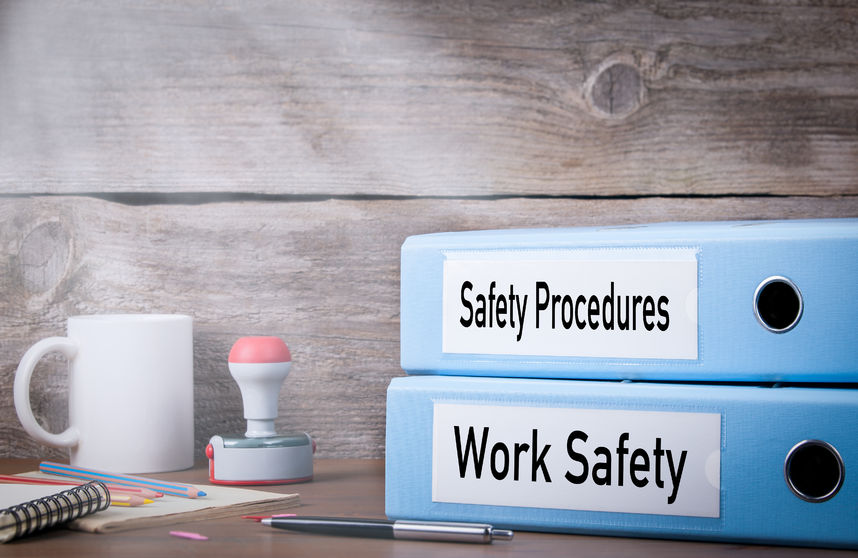
That may sound like a strange question because as far as you’re concerned, of course you’re compliant. But are you really?
What might have been compliant five years ago, may not be now. Due to the frighteningly high incidence of workplace injuries and deaths in Australia, the laws are changing all the time.
For example, up until 2012, your workplace was governed by Occupational Health and Safety (OH&S) laws. These differed depending on which state or territory you were in.
Workplace Laws Have Changed
Clearly this was confusing, and it was felt that the old OH&S laws were no longer enough to protect everyone in the workplace. So, in 2012, Workplace Health & Safety (WHS) was introduced across all states.
As a business owner, you must meet WHS requirements, or you could face substantial fines, or even a prison term.
One of the changes that took place is particularly relevant as we move away from having all full-time employees, to more part-time, casuals and contractors. Under OH&S, you would only be responsible for your immediate workplace; now you are also responsible for those who come into your workplace.
Understanding Your Responsibilities
In other words, you are responsible for the health and safety of your customers, visitors, contractors, suppliers, and volunteers, as well as employees.
To fulfil this responsibility, the law requires you to do several things. These include, but are not limited to:
- Assess all health and safety risks and put measures in place to control them
- Provide and maintain safe machinery, tools and materials
- Provide a suitable working environment (heating, cooling, ventilation etc)
- Ensure the workplace layout is suitable and safe
- Ensure safe handling of goods and substances
- Have insurance – including workers compensation insurance – in place
Training And Education Is Crucial
Under the laws, both the employer and employees are responsible for health and safety. It is up to each staff member to behave responsibly, use equipment as indicated, wear safety clothing if required, and so on.
They are required to comply with all health and safety instructions, and not wilfully endanger themselves or others.
However, it is up to you to show them HOW to safely and properly use tools and personal protective equipment (PPE). You can see how easy it is for blame to still come back to the employer.
This may feel unfair, but you only have to look at workplace statistics to understand why this must happen.
Australian Workplace Fatalities
As of 22 May, 63 Australian workers had been killed at work in Australia in 2017. Surprisingly, the highest number of fatalities occurred in the transport, postal and warehousing industries.
The next highest is agriculture, forestry and fishing, followed by construction, art and recreation services, and then mining.
However, even if your business falls outside of those main categories, you still need to provide a safe workplace and meet safety legislation. If you don’t it could cost you dearly.
Protect Your Reputation
Injuries in the workplace cost our economy more than $60 billion every year. Then there is the enormous impact workplace injuries and deaths can have on the families and friends of the victim.
As well as paying out for compensation, and probably fines, you will endure other ‘hidden’ costs, such as higher insurance premiums, downtime, poor productivity caused by low staff morale, and so on.
One of the biggest losses could be your reputation. Building your customer base, and attracting the best employees, is largely based on trust and reputation. Generally speaking, neither group will want to be associated with someone who they perceive as failing in their duty.
Steps You Can Take
For the sake of a fair investment, you could be risking everything you’ve worked for, by not implementing a proper health and safety system.
If you are worried that your workplace may not be compliant with legislation, there are things you can do immediately to rectify the situation.
First and foremost, you should contact the relevant authority in your state or territory, to see what you should be doing. You will find more information on this at https://www.business.gov.au/Info/Run/Workplace-health-and-safety/WHS-OH-and-S-Acts-Regulations-and-Codes-of-Practice
Under each state or territory, you will see what Act, Regulations and Codes apply; who to contact, and what other resources are available to you.
Accredited Safety Management Systems
We also suggest you look into recognised workplace safety management systems, such as AS/NZS 4801, OHSAS 18001 or ISO 45001. These are general systems that are relevant to most industries. However, there are also specific systems for some, higher risk industries.
The beauty of many of these management systems is that you can seek accreditation. Once you have that, you can use it as part of your marketing, to show that you are a responsible employer.
Ensuring your workplace is compliant with health and safety will bring many benefits, including:
- Reduced chance of serious injury or fatality
- Less downtime and reduction in associated costs
- Potential to reduce insurance premiums
- Demonstrates legal compliance
- Shows commitment to stakeholders
- Boosts staff morale
- Improves reputation / Attracts more customers
- Helps attract and keep good staff
You have to agree, the benefits clearly outweigh the cost of ‘doing the right thing’.
Sell your commercial property or business privately without business brokers. We advertise your business for sale or real estate listing in our go-to website, national glossy Coast to Coast Magazine and major real estate websites reaching many motivated buyers. Call now to sell your business or property 1300 793 792 or email [email protected].
